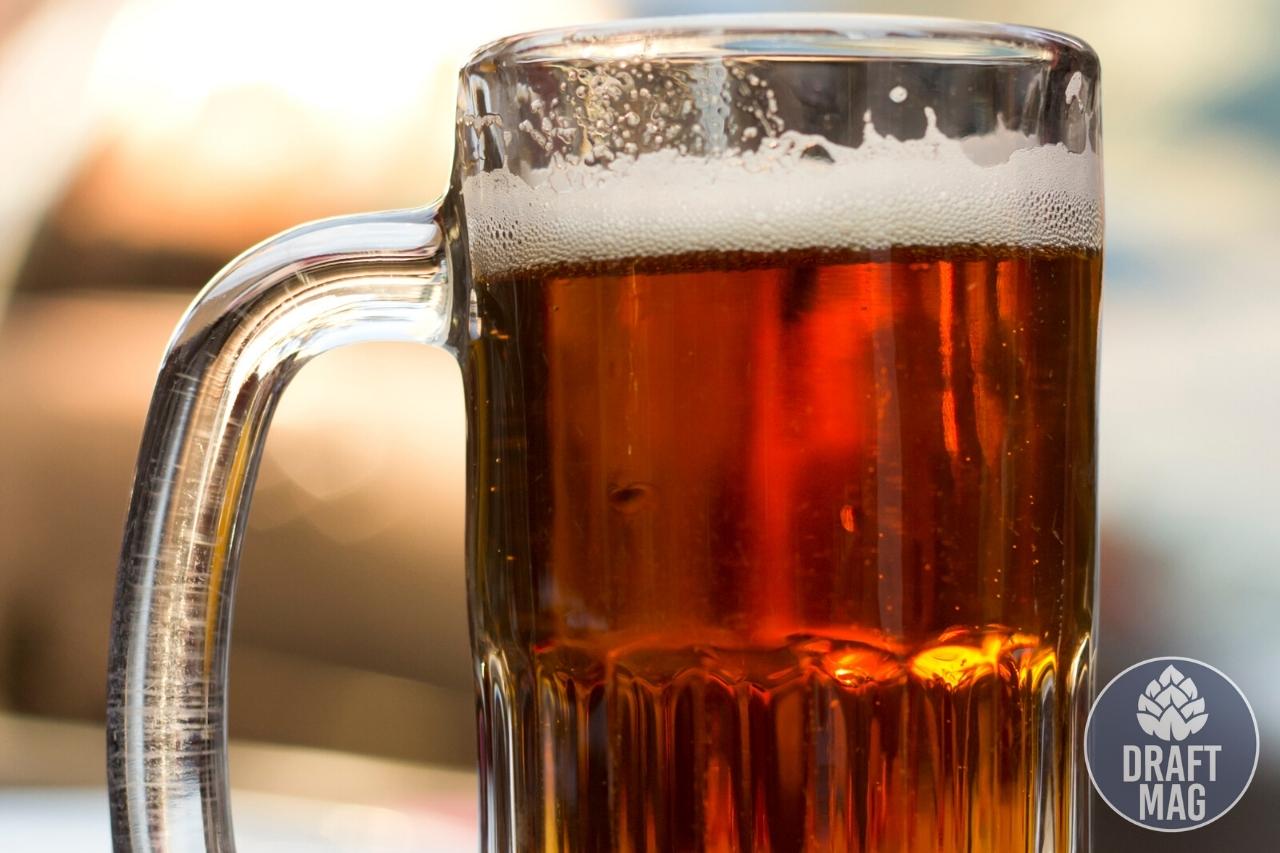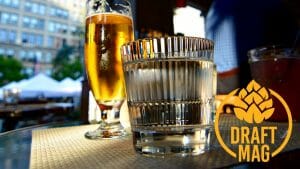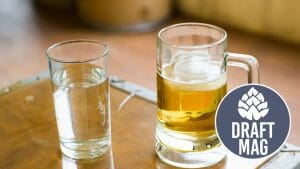DDH IPA: An Innovative and Modern Take On Traditional IPAs
 DDH IPA, also known as double dry-hopped pale ales, is the result of the American Craft beer revolution.
DDH IPA, also known as double dry-hopped pale ales, is the result of the American Craft beer revolution.
Double dry hopping is a process of supercharging brews with heavy hop flavors during post-fermentation in two stages. Over time, brewers have mastered this technique to create some unique recipes.
In this article, we have discussed every aspect of the dry-hopping technique and listed some DDH IPAs that you must try.
What is a DDH IPA?
DDH IPA is a Pale Ale that is dry-hopped twice or with a double quantity of hops. To put it simply, it is the addition of hops in two stages during the later stages of fermentation. Double dry hopping is achieved in two ways: double the hop quantity or repeat the dry-hopping.
Taste
A DDH IPA shows big, bold characteristics of hop aromas and flavor. Due to the addition of hops at different stages during fermentation, the brew retains almost all characteristics of hops. Hop bitterness is low to mild in almost all DDH beers. However, DDH IPAs show more aromatic characteristics than the flavor of hops.
Dedicated use of hops lends DDH IPAs tropical fruit characteristics. Due to this, DDH beers are juicy and full of aromatic notes of tropical fruits. Further, to make these beers more balanced, brewers use malt adjuncts.
Almost all Double Dry-hopped beers are New England IPAs or NEIPAs. According to the Beer Judge Certification Programme, NEIPAs should be intensely hop-forward due to the late addition of hops.
Some of the common characteristics of a DDH IPA are:
- It ranges from pale to medium-dark in color with a creamy head.
- The late addition of hops lends its juicy characteristics with notes of tropical fruits, peach, pineapple, and mango. Malt sweetness is also noticeable.
- DDH IPA flavor profile is a mix of herbal green character, mango, pineapple, and citrus with low to moderate malt character.
- It has an overall incredible mouthfeel with bitterness lingering until the end.
What Is Dry Hopping?
Dry hopping is the process of adding hops to the wort after a kettle boil, preferably during the fermentation process. When hops are added at the time of boil, essential oils get diluted in the process.
Essential oils play a significant role in holding hops’ flavor profile. Hence, to avoid the loss of essentials during the boil, brewers started to add hops at the end of the boil, sometimes during the first or second part of fermentation.
The process of dry hopping became popular in the 1970s. At first, it was primarily used to give IPAs their signature hop flavors and aromatic notes, but craft brewers also started to use dry-hopping in other styles where extra hop flavor is required. To make IPAs hop’s flavor profile more complex, brewers experimented with the Double dry hopping (DDH) technique.
– Double Dry Hopping
Unfortunately, the brewing community has not outlined the definition of double dry hopping. Technically, double dry hopping can be achieved in two steps.
-
Dry Hopping at Two Stages
To make the brew more flavorful, brewers dry hop a beer with the same or different hops in two or more stages. Generally, the first addition of hops happens about a week before canning. The second addition takes place about three days later.
-
Dry Hopping With Double Quantity
In this process, the beer is dry-hopped only once during the primary or secondary fermentation. However, brewers double the quantity of hops in one go. Although a less preferred method, it is more convenient than adding hops in two stages.
Of these two options, the first is more preferred by brewers as it adds more depth to the hop flavor and aroma.
– Uses of Double Dry Hopping
Double Dry Hopping is a process that is primarily used to achieve an intense hop aroma in beers. In addition to aroma, it also adds depth to beer hop flavor. To make it even more complex, brewers use dry-hopping in two stages. Later additions further complement the hop profile built by hops in the first addition.
The addition of hops during cold fermentation allows controlled infusion of hops aroma and flavor into the brew. Since hops are not added during the boiling process in the dry-hopping technique, most of the essential oils in hops remain intact. Otherwise, adding hops in such large quantities during the boil will result in intense, unwanted bitterness.
The best advantage of adding hops during the fermentation process is that the beer doesn’t become too bitter. Dry hopping has been used for many years to lend IPAs their signature hop aromatics and flavors. Nothing is more impressive than a beer with a big-bold hop profile without additional bitterness.
Overall, it helps add diverse hop aroma and flavor to the beer without bittering it.
How Is DDH IPA Different From Regular Pale Ales?
Traditionally, pale ales are brewed using single malts with single hops added during boiling, while in DDH IPAs, hops are added on two different days post-fermentation. Commonly, hops are added in two different stages before one week of bottling (kegging).
Russian River Brewing Co’s Pliny the Elder beer is a classic example of DDH IPA. It has been on the top list of West Coast IPAs lovers for many years. Today, DDH is very common among New England IPAs (NEIPAs). However, it is also used in other styles such as odd lager and ales to make hop-forward beers.
Over the years, Double dry hopping has turned into a marketing gig to some extent, with more and more beer prefixing DDH to their releases to increase speculation amongst beer lovers.
List of the Best DDH IPAs
Here are some DDH IPAs you just can’t miss.
-
Pliny The Elder
- Style: Double IPA
- ABV: 8 percent
- From: Russian River Brewing Company
Double dry hopped Pliny the Elder is a trendsetting, west coast IPA. This double IPA is hopped twice at two stages with Simco, CTZ, Amarillo, and Centennial hops. Pliny the Beer is known for popularizing the DIPA style and Double dry-hopping process.
It is a true, hop-forward beer with fruity hops aroma and flavor. Although a hop bomb, it doesn’t go harsh on taste buds. Overall, it maintains harmony with hop bitterness and malt sweetness.
-
Summer Street IPA
- Style: New England IPA
- ABV: 7.2 percent
- From: Trillium Brewing Company
Summer Street IPA is Double dry-hopped with Simcoe hops. This beer is a chart-topper on popular beer rating websites, all thanks to the DDH process that lends its signature aromatics of pine and ripe pineapple. Summer Street is packed with complex flavors of green pear, juicy tangerine, strawberries, and pineapple.
On top of this, the dedicated use of Simcoe hops lends it big, bold hop flavors and aromas.
-
Big D IPA
- Style: Imperial/Double IPA
- ABV: 8 percent
- From: Lakewood Brewing Company
Big D IPA #001 is a big, bold, and hazy IPA. A rich tropical nose results from double dry-hopping Azacca and Mandarina hops. Hops and malts characteristics maintain a perfect equilibrium. Lakewood Brewing Company has released three IPAs under the Big D banner, of which Big D IPA #003 is the latest and most flavorful beer.
-
Hill Farmstead Abner
- Style: New England IPA
- ABV: 8.2 percent
- From: Hill Farmstead Brewing Company
Abner is an unfiltered and double dry-hopped imperial pale ale. The dedicated use of American variety hops and malted barley make it a truly world-class IPA. The choice of hops is broad and includes Centennial, Warrior hop, Chinook, Columbus, Simcoe, and Dextrose.
The nose is full of floral aromas with notes of citrus and pine. While it remains juicy on the front, hop bitterness remains prominent throughout. The finish is crisp and dry.
-
Double Mosaic Day Dream
- Style: New England IPA
- ABV: 8.5 percent
- From: Other Half Brewing Company
Although being a DDH beer, Double Mosaic DayDream is smooth throughout all thanks to the careful use of lactose and oats. This beer is Double Dry-hopped with Mosaic Hops.
It is a little hazy, juicy, malty, and hoppy with aromatic notes of tropical fruits such as mango and citrus. Overall, it is a great hop-forward beer.
-
DDH Pseudo Sue
- Style: American Pale Ale
- ABV: 6.8 percent
- From: Toppling Goliath Brewing Company
This is another world-class Double dry-hopped beer showcasing the magic of Citra hops that lends it notes of citrus and mango. It has a big, bright, refreshing tropical fruit flavor with floral and grassy aromas and a hint of mild sweetness.
Overall, it is a well-balanced beer with a delicate body. The finish is crisp, with a mild bitterness lingering through the last.
-
Trellis Buster
- Style: IPA – Imperial
- ABV: 7.8 percent
- From: Crooked Stave Artisan Beer Project
It is a heavily hopped IPA. Simcoe, Azazza, and Citram Motueka are used for dry-hopping this beer, which imparts a big, bold character. However, at the same time, a balanced malt profile makes it smooth and drinkable.
It has aromatic notes of pines, resins, and tropical fruits due to the careful usage of hops. Overall, it is a smooth and refreshing beer with prominent hop bitterness.
-
Whirlpool NEPA
- Style: New England Pale Ale
- ABV: 4.5 Percent
- From: Night Shift Brewing
Whirlpool NEPA features a smooth and citrusy New England pale ale from the Night Shift Brewing Company. The beer is hazy blonde upon pouring, with aromatic notes of grapefruits and ripe peaches. The beer tastes juicy, fruity, and crisp with moderate bitterness.
Overall, Whirlpool NEPA is a bright and vibrant beer presenting superior and refreshing drinkability with minimal bitterness.
History of DDH IPAs
Historically, hops were added to the final product as a stabilizing agent and preservative. British merchants used this technique while shipping beers to India and are credited with unknowingly discovering the DDH method.
 During the American Craft beer revolution, brewers revived this process to add more complex hop flavors to their brew.
During the American Craft beer revolution, brewers revived this process to add more complex hop flavors to their brew.
With time, the popularity of hop-forward beers such as IPAs increased drastically. To cater to this requirement, a rat race to heavily hop IPAs began.
This pursuit gave birth to the Double Dry Hopping process and, ultimately, DDH beers. Russian River Brewing Co’s Pliny the Elder beer is said to be the first commercially successful DDH beer.
FAQs
Here are some frequently asked questions about DDH IPAs:
– What Does DDH IPA Mean?
DDH is an acronym for double dry-hopping, and it is a process of dry hopping a brew at two stages or with a double quantity of hops. Particularly, the Double-dry hopping technique is most associated with New England IPAs, as they need to have big hop aromas without prominent hop bitterness.
Most of the Double dry hopped beers are hazy due to the late addition of hops. They pour hazy in a glass with a big and juicy nose and flavor. DDH Hazy IPA from Otherside Brewing Co and Revel Brewing Co are some noted mentions in this category.
– What Does DDH Beer Taste Like?
Double dry-hopped beers are hop bombs, which means they burst with hop aromas and flavors. Despite being hop bombs, they are not always bitter. It is the beauty of the dry hopping technique that lends its signature hop profile without additional bitterness.
– What’s the Difference Between IPA and DIPA?
DDH IPAs burst with hop aroma and flavor, while Single Dry-hopped IPAs are less aromatic and hop-forward than DDH IPAs. The answer lies in the taste preferences of the drinker — if you are beer enthusiasts who do not shy away from hop-forward beers, then DDH IPA is the beer of your choice.
It is important to note that DDH doesn’t necessarily mean that the beer will be bitter. The beauty of dry-hopping is such that it restricts the hop bitterness while adding the hop aroma/flavor.
Endnote
 We have tried to outline every aspect of modern, innovative DDH IPAs along with a list of popular Double dry-hopped beers available in the market.
We have tried to outline every aspect of modern, innovative DDH IPAs along with a list of popular Double dry-hopped beers available in the market.
Here is a summary of our take on DDH IPA:
- DDH IPAs are made by adding hops to a brew during cold fermentation in two stages or double quantities in one go. This process is known as Double Dry Hopping.
- DDH IPAs have an extensive, bold hop profile with low to moderate bitterness.
- Double Dry Hopping is most common with New England IPAs.
- DDH is also used in other beer styles that need to have a complex hop profile.
- The prefix DDH is also used as a marketing gig to lure beer enthusiasts.
Whatever the case may be, a double quantity of hops without prominent bitterness is a win-win situation for any beer lover. Try a pint or two of our listed Double dry-hopped beers to know the actual difference.






